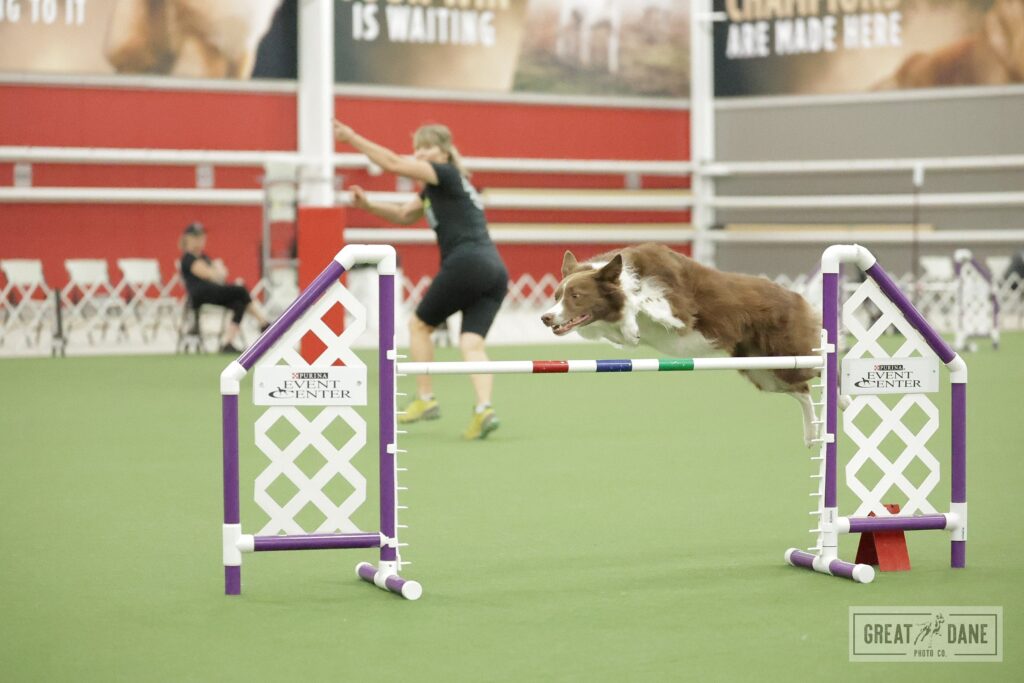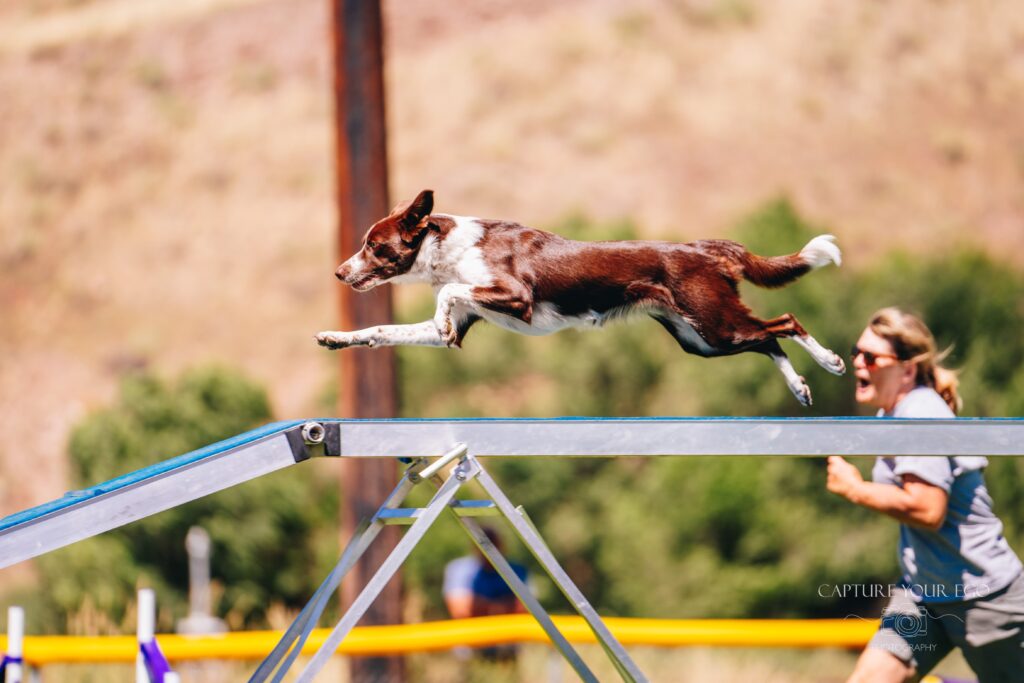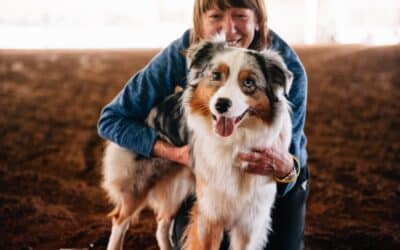In the world of dog agility, few names resonate as strongly as Laura Bussing. With over 35 years of experience in dog training and behavior consulting, and 15 years specifically dedicated to agility coaching, Laura has become a beacon of knowledge and inspiration in the canine community. Her impressive accolades include recognition as the Best Dog Trainer in Salida, Colorado, and competing at national levels with her talented Border Collies.
Laura’s journey into agility began with a spark of curiosity when she first witnessed an agility competition. Since then, she has transformed her passion into a thriving career, specializing in building resilient agility teams and addressing behavioral challenges. Her unique approach focuses on fostering a deep bond between handler and dog, ensuring that both partners thrive in the sport.
Now, as the owner of Canine Culture LLC, Laura has not only trained countless dogs and their humans but has also become a respected figure in the agility community. Join us in this interview as we explore Laura’s remarkable story, her insights on the OneMind Dogs method, and the invaluable lessons she’s learned along the way.
Q: Laura, you have an impressive background as an agility coach, competitor, and judge. Can you share with us what first sparked your interest in the sport of agility?
A: My interest in agility began a super long time ago when I saw an agility competition and thought it was so cool. At the time, I had an older dog who weighed 95 pounds, so I wasn’t able to dive into the sport right away. However, everything changed when my next dog came along. Her name was Maggie, and she became my first agility dog.
Q: When you first started out in agility, what were some of the biggest challenges you faced?
A: When I first started in agility, my biggest challenge was simply not knowing what I was doing and finding the time to devote to training. Running my own dog training and pet supplies business kept me extremely busy, which made it tough to focus on agility. I also struggled to find a place to train and the right equipment. I had a small yard, so it was limited what I could do.
My husband even got creative and built a jump and a tire jump out of wood and a motorcycle tire! But despite these hurdles, Maggie and I eventually did a fun run together. She was amazing and learned so quickly, which gave me a false impression that agility didn’t require much training. It was quite the eye-opener!
Q: How did your training journey progress over the years, and what milestones stand out in your agility career?
A: My training journey really took off when I connected with one of my obedience students who was also into agility. We gathered a group and started having winter practice sessions in an indoor horse arena, which was a game-changer for me. I slowly became more and more hooked on agility as my business grew, which allowed me to dedicate more time to training.
During this period, I started training another dog named Sawyer, a border/staffy mix. He learned incredibly quickly, and when we competed in a trial together around a year later, it was a pure adrenaline rush! I was majorly hooked, and that was in 2014.
In 2016, I made the decision to get my first border collie puppy, Rayn, and get serious about agility. I had waited a long time for this, and it was a significant milestone. I also discovered OneMind Dogs and began learning about their foundation process and handling. I’ll admit, I wasn’t great at first, but by 2017-2018, I became a Certified Instructor through OneMind Dogs.
My goals with Rayn were to try out for World Teams one day,but that was just not in the cards for her. I’m currently pursuing that dream with my 6 year old Border Collie, Cam. As for my biggest milestones, I’ve had the privilege of competing in Finals across various organizations, more so the FCI Level 3 courses. I primarily compete in UKI and ISC/AKC Cups, and completely enjoy the thrill of running big courses where my dogs can really open up and showcase their skills. 2024 has been going well with Cam and I winning Overall at the UKI West Coast Cup and UKI Texas Classic.

Q: In your experience, how has agility training impacted your relationship with your dogs?
A: Agility training has immensely evolved my relationship with my dogs. The bond and trust I share with Rayn, Cam, and Whoopi is unlike any I’ve experienced before. While I loved my previous dogs, agility has taken these relationships to a new level. It’s truly a teamwork experience, like a well-orchestrated dance from start to finish. My dogs are just amazing partners!
The thing is, agility demands a level of trust and confidence from both the handler and the dog that surpasses anything else I know in dog sports. Working together through obstacles not only strengthens our connection but also enhances communication.
Q: The OneMind Dogs method has clearly been influential in your coaching. Can you elaborate on how it has shaped your approach and the knowledge you share with your students?
A: The OneMind Dogs method has been a major influence on my career as a dog trainer and agility instructor. It taught me to understand agility from the dog’s perspective, which I apply daily in my training sessions. Learning from experts like Janita, Tuulia, and Jaako has been invaluable; their insights have improved my skills as an instructor and enriched my knowledge base.
After 35 years in dog training, the concepts I gained through OneMind Dogs have transformed my approach. Attending workshops in Finland was a huge milestone for me, allowing me to deepen my understanding of agility handling and foundation processes.

Q: You have a unique perspective on addressing behavior and competition stress issues in agility dogs. Can you tell us more about your work in this area and the methods you’ve developed?
A: As a behavior consultant, I’ve worked extensively with dogs suffering from anxiety and reactivity issues. In 2017, my own dog Rayn experienced a traumatic event at a competition that severely impacted her performance. I knew I had to help her overcome this, and in the process, I realized many other handlers were struggling with similar challenges.While competing, I observed dozens of dogs that were uncomfortable with the agility competition process.
It was clear something needed to be done to help these ring-stressed dogs. So my journey began to help Rayn and develop methods to address this issue. After much work, I was able to build up her resiliency and change negative associations into positives. However, I noticed most handlers weren’t actively working to help their stressed dogs. So I decided to create a comprehensive curriculum focused on six key elements, grounded in science, to help change a dog’s conditioned emotional response to competing.
I started teaching these methods at seminars across the USA in 2019. When COVID hit, I decided to take the curriculum online, which turned out to be a blessing in disguise. It allowed me to expand the content in great detail, ensuring students had all the information needed to successfully change their dog’s anxiety. It’s a gradual process, but the reward of seeing your dog happy and thriving in agility is priceless.
Check out Laura’s Tips for Tackling Ring Stress online training theme on our learning platform here!
Q: What advice would you give to someone who is just starting out in agility training and looking to build a strong foundation with their dog?
A: My advice for anyone starting out in agility is to keep it simple and focus on building value for your dog to engage with you first. Establish solid reinforcement strategies using food and toys. Once you have that foundation, have fun with jumps and tunnels—they’re two of the easiest obstacles to train!
For jumps, place a bowl of treats on the other side to encourage your dog to jump over. Start with the bars very low, around 4 inches, and take your time before raising them. The same goes for tunnels; begin with short, straight ones and use treats to motivate your dog to go through. You can even scrunch up the tunnel to make it shorter during the learning phase. Just make sure to weigh down the tunnels to keep them in place.
Reward your dog a lot and make them feel like they’ve just hit the jackpot! Avoid corrections, and soon enough, you and your dog will be doing agility together. If you want to dive deeper, consider signing up for OneMind Dogs for handling tips and training advice. And remember, local instructors can be great resources to help you get started. Just be careful—agility can be addictive!
Q: As an accomplished competitor, what are your current goals and what are you most excited about in your future agility endeavors?
A: Right now, I’m focused on running FCI courses at AKC/ISC Cups here in the States, attending world team tryout events, and competing in big UKI events. I have mini goals at every event and that is to be hyper focused on my job as the Chief Navigator. To stay connected and to give my dog directions so they never have any questions about where they are going. If I do that for each run, we will have success. Staying in the moment and focusing on small, attainable goals will get you to your big goal.
I am also developing my young dog, Whoopi who is 21 months old. We are starting to compete and it’s thrilling to see her strong foundations shine on course! I can’t wait to see what the future holds for us in the agility world! Each new challenge brings fresh excitement, and I’m eager to keep growing our teamwork.
Thank you, Laura, for sharing your wisdom and expertise with us. Your impact on the agility community is undeniable, and we look forward to following your future successes and seeing what you and your canine partners accomplish next!



